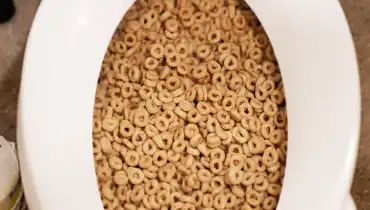Can One to Flush Food in the Toilet?
Can One to Flush Food in the Toilet?
Blog Article
Presented here below you will find additional professional data when it comes to What Can Happen If You Flush Food Down the Toilet?.

Intro
Lots of people are typically faced with the problem of what to do with food waste, especially when it concerns leftovers or scraps. One typical question that develops is whether it's all right to purge food down the commode. In this post, we'll delve into the reasons why people may consider flushing food, the effects of doing so, and different techniques for appropriate disposal.
Reasons people might consider purging food
Absence of understanding
Some people may not know the potential injury caused by flushing food down the toilet. They may wrongly think that it's a harmless practice.
Convenience
Flushing food down the bathroom might seem like a fast and very easy remedy to dealing with undesirable scraps, specifically when there's no nearby garbage can available.
Idleness
In many cases, individuals may just pick to flush food out of sheer idleness, without taking into consideration the repercussions of their activities.
Repercussions of flushing food down the bathroom
Ecological effect
Food waste that winds up in rivers can contribute to pollution and damage marine ecological communities. In addition, the water used to purge food can stress water resources.
Pipes issues
Flushing food can cause clogged pipelines and drains, creating pricey plumbing repairs and aggravations.
Sorts of food that must not be purged
Fibrous foods
Foods with coarse textures such as celery or corn husks can get tangled in pipes and create clogs.
Starchy foods
Starchy foods like pasta and rice can soak up water and swell, bring about clogs in pipelines.
Oils and fats
Greasy foods like bacon or cooking oils must never ever be flushed down the commode as they can solidify and cause blockages.
Proper disposal approaches for food waste
Making use of a waste disposal unit
For homes equipped with garbage disposals, food scraps can be ground up and flushed through the plumbing system. Nevertheless, not all foods appropriate for disposal in this manner.
Recycling
Particular food packaging materials can be recycled, decreasing waste and reducing environmental effect.
Composting
Composting is an environment-friendly method to throw away food waste. Organic materials can be composted and utilized to improve soil for horticulture.
The significance of correct waste administration
Decreasing ecological harm
Proper waste monitoring practices, such as composting and recycling, aid lessen air pollution and protect natural resources for future generations.
Safeguarding pipes systems
By preventing the method of flushing food down the commode, property owners can avoid expensive plumbing fixings and maintain the stability of their pipes systems.
Final thought
To conclude, while it might be appealing to flush food down the toilet for convenience, it is necessary to understand the potential repercussions of this activity. By adopting proper waste administration methods and dealing with food waste responsibly, individuals can contribute to much healthier plumbing systems and a cleaner environment for all.
FLUSH FOOD DOWN THE TOILET?
FLUSHING FOOD CAN CAUSE BLOCKED DRAINS IN YOUR HOME
All of the plumbing fixtures in your home are connected to the same sewer pipe outside of your home. This outdoor sewer pipe is responsible for transporting all the wastewater from your home to the Council sewer mains. Even small pieces of food that go down the kitchen sink can cause problems for your sewer. It should therefore be obvious that flushing larger bits of food, such as meat, risks a clog in either the toilet itself or the sewer pipes. Flushing greasy food is even more problematic because oil coagulates when it cools, coating the interior lining of your pipes.
THE TOILET IS NOT A BIN
Food isn’t the only thing that people shouldn’t be flushing down the toilet. People use the toilet to dispose of all kinds of things such as tampons, makeup wipes, dental floss, kitty litter and even underwear. Water goes to great lengths to educate residents about the high costs and stress placed on wastewater treatment systems simply from people flushing the wrong stuff down the toilet. It costs taxpayers millions of dollars each year, and homeowners thousands in blocked drain repairs.
FLUSHING FOOD IS A WASTE OF WATER
Flushing food is a waste of our most precious resource - water. In June this year Level 1 water restrictions were introduced to protect water supply from drought conditions. Much of New South Wales continues to be affected by prolonged drought with recent figures revealing up to 97 per cent of the state remains in drought. Depending on whether you have a single or dual flush toilet, every single flush uses between five and 11 litres of water. In the current climate this is a huge amount of water to be wasting on flushing food that should be placed in the bin (or better yet, the compost).
https://www.jabplumbingsolutions.com.au/blog/can-you-flush-food-down-the-toilet

Do you enjoy reading about Think Twice Before Flushing Food Down Your Toilet? Try leaving a remark down the page. We would be delighted to listen to your responses about this page. We hope to see you back again before long. Sharing is good. Helping people is fun. Thanks for going through it.
Schedule Today Report this page